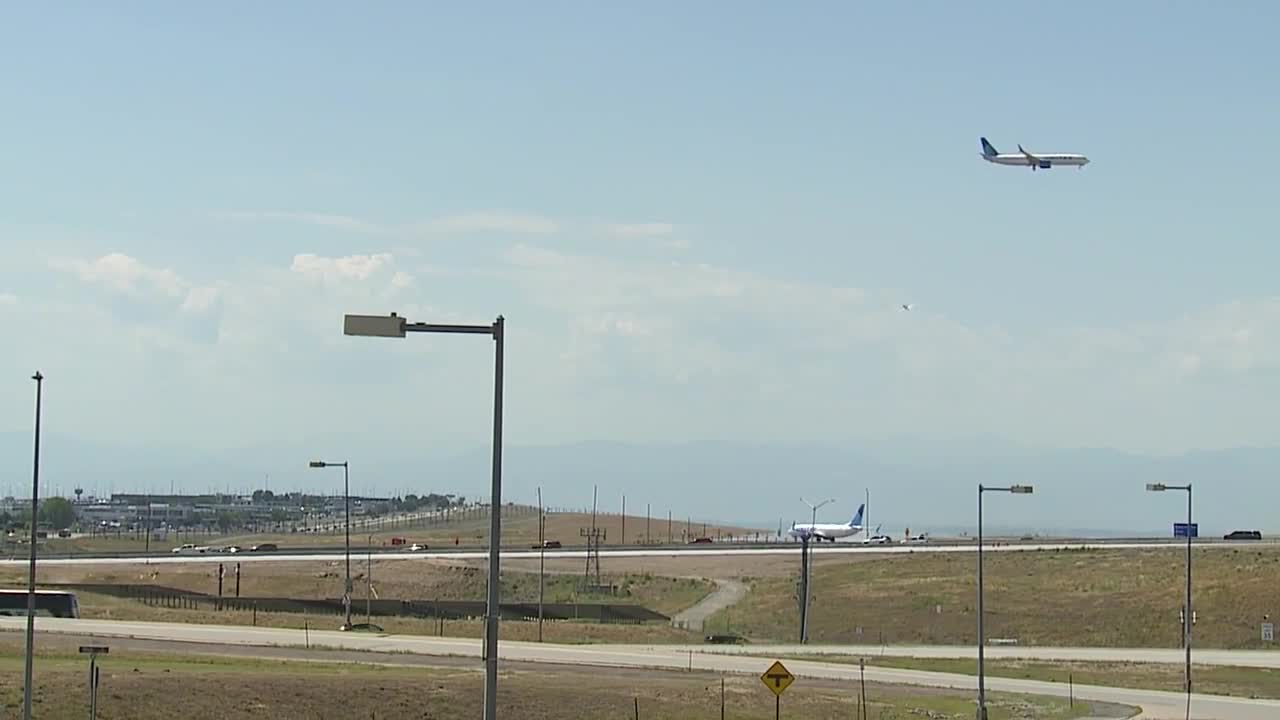DENVER — Denver International Airport is already the third-busiest airport in North America, serving around 82 million passengers in 2024 and generating roughly $47 billion in revenue annually.
Airport CEO Phil Washington said the airport, which opened in 1995, was initially built to accommodate 50 million passengers a year.
To do that, the airport is in the early planning stages of a terminal expansion to build future walkable concourses in order to add 50 new gates. It's also planning a new consolidated, indoor rental car facility to replace the expanse of outdoor lots outside the airport.
In a community meeting at the Green Valley Ranch Recreation Center on Tuesday night, Washington reiterated that leadership also wants DIA to be "the greenest airport in the world," to electrify its fleet of vehicles and snowplows, and to help the city of Denver reach its goal of carbon neutrality by 2040.
Those environmental goals combined with what Washington said is "incredible growth" coming, means the airport is looking to expand its alternative energy sources.
The airport's 11 solar arrays currently on-site generate approximately 50 megawatts of power, while the airport requires about 45 megawatts to operate. However, Washington said those needs will increase dramatically, and he emphasized the importance of power redundancies to avoid catastrophic power failures seen at other airports.
The airport is now submitting a request for information (RFI) to the private sector to assess its energy needs and explore potential solutions. Potential options include solar, wind, geothermal, and small modular nuclear reactors.
Before Tuesday's meeting in Green Valley Ranch, airport leaders held community meetings at the airport Westin, as well as in Commerce City and Aurora, to garner feedback to consider before posting the RFI.
"We're not building anything, we're not breaking ground on anything," Washington told Denver7 in a one-on-one interview on Tuesday. "We're pursuing information, and information is a powerful thing, and we need it for our community."

Back in August, it seemed the airport was ready to navigate down the path of nuclear energy.
A press conference featuring Washington and Denver mayor Mike Johnston announced plans for a 6-12 month, $1.25 million feasibility study to explore small modular nuclear reactors as a future energy source.
But just two days later, that plan was grounded after community pushback. Denver City Council member Stacie Gilmore — who represents District 11, including the Green Valley Ranch and Montbello neighborhoods near the airport — expressed concern that community outreach didn't happen before the feasibility study began.
Washington apologized to those at Tuesday's meeting before starting his presentation, saying they should have prioritized outreach to District 11 first.
The Scripps News Group asked Washington why August's press conference announcement of a nuclear power feasibility study changed to a more methodical approach.
"It's important that we get things right, and so getting things right may mean changing course, and we're happy to do that," Washington replied.

Other neighbors have raised environmental, health or safety concerns surrounding a plan to use nuclear energy at the airport. Those same concerns came up at Tuesday night's meeting.
“To consider that here for this airport would be precedent-setting," one attendee said in a Q&A with Washington. "Once that precedent is set, it's likely to begin a chain reaction... A singular modular reactor may not be much of an issue. You get ten of 'em, you get 10 times the potential for a problem."
Gilmore spoke during the Q&A as well, accusing Washington and the airport of planning to generate more revenue at the cost of their District 11 neighbors' health.
Others said there should be better communication between the neighborhoods and airport leaders, or called for a community benefits agreement where the airport uses revenue to invest in the well-being of neighbors who now deal with airport impacts like worsening traffic.
For his part, at one point Washington told the packed meeting, "If there are [energy] solutions out there that are gonna harm people, then we're not gonna do it." He did not commit specifically to avoiding nuclear power or any other alternative energy option.
- We previously spoke with Thomas Albrecht, professor and director of the Nuclear Science and Engineering Center at the Colorado School of Mines, about SMR's, what they are, and how they work. You can watch the full interview in the player below:
Washington says the work being done now will be the blueprint for handling energy needs at the airport for decades to come.
"We're making the first step to ensure the future of the largest economic generator in the state, and west of the Mississippi, for the next 50 years," he told Denver7. "We don't know what we don't know. And so it's our responsibility to get the future prepared."
Washington says the airport plans to post the RFI by January, evaluate it through the spring, and then start another round of community outreach about their conclusions sometime next summer.





